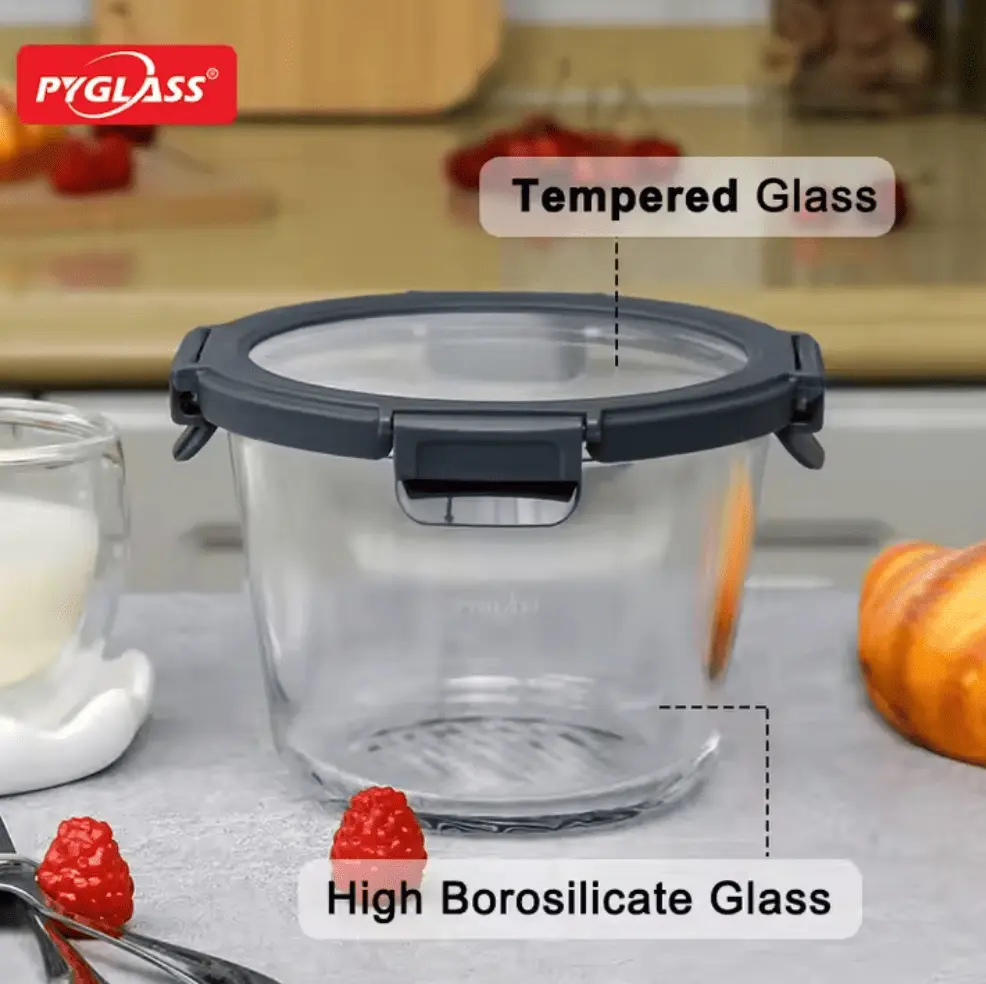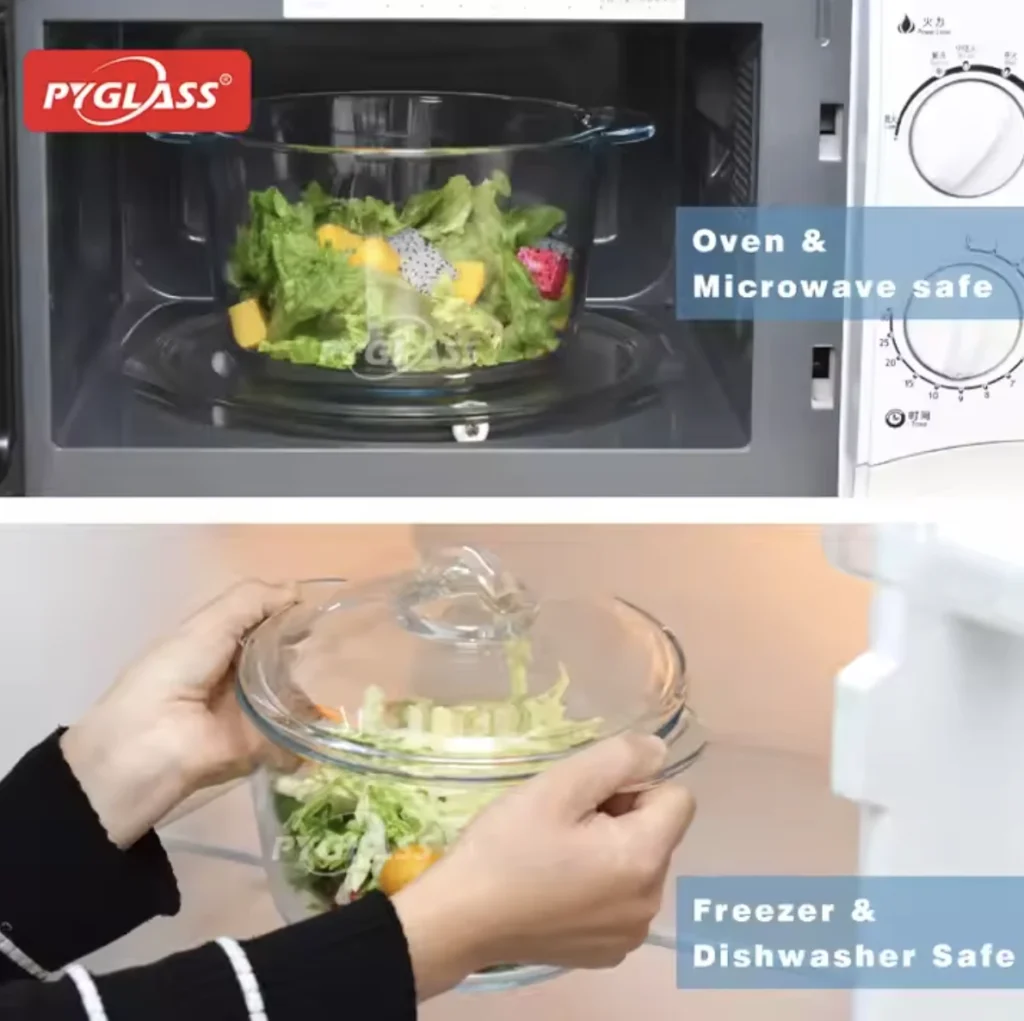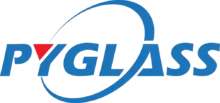Sourcing glass containers seems simple, but the wrong lid can lead to customer complaints, returns, and damage to your brand’s reputation. Leaky seals, cracked plastic, or lids that don’t survive the dishwasher can turn a great product into a liability, frustrating your customers and hurting your bottom line.
The best lid depends on your target market’s needs. For versatility and cost-effectiveness, BPA-free plastic lids 1{#ref-1} with silicone seals are often the top choice. However, for eco-conscious consumers or specific uses like oven-baking, materials like silicone, wood, stainless steel, or even glass lids offer distinct advantages.

I’ve spent over 15 years in the glass manufacturing industry, and I’ve seen firsthand how a small component like a lid can make or break a product line. It’s not just about covering a container; it’s about performance, safety, and customer satisfaction. A decision that seems minor at the purchasing stage can have a huge impact on your sales and brand loyalty 2{#ref-2} down the road. Let’s break down the options so you can make an informed decision for your business.
Which Lid Material Offers the Best ROI for Your Market?
In the competitive retail market, choosing a lid material based on unit cost alone can be a very expensive mistake. High return rates from poor performance or safety concerns can quickly erase any initial savings you made. Let’s find the sweet spot between cost, quality, and market appeal.
Silicone lids offer an excellent long-term ROI through superior durability and safety, boosting brand value. For a faster sales return, high-quality plastic lids provide a great balance of low initial cost and strong market acceptance, making them an ideal choice for balancing performance and budget.
When we talk about Return on Investment (ROI) 3{#ref-3}, we can’t get stuck on the per-unit cost. I remember a client years ago who insisted on the absolute cheapest plastic lid available to maximize their margin. They saved a few cents per unit, but within six months, they were dealing with a flood of negative reviews. The lids were cracking in the freezer and warping in the dishwasher. The cost of returns, customer service hours, and damage to their brand name far exceeded the initial savings. This experience taught me that true ROI requires a much bigger picture, including customer reviews, return rates, and brand value. This chart helps visualize that comprehensive return.
📊 ROI Comparison Chart: The Best Choice for glass storage containers with lids
| Material da tampa | Unit Cost (Est.) | Durabilidade | Resistência ao calor | Seal Quality | Perceived Value | Overall ROI Score |
|---|---|---|---|---|---|---|
| Silicone Lid | Médio | Alta | Excelente | Bom | Alta | ★★★★★ |
| Stainless Steel Lid | Alta | Very High | Excelente | Excelente | Very High | ★★★★☆ |
| Plastic Lid (PP/PE) | Baixa | Médio | Médio | Fair to Good | Médio | ★★★☆☆ |
| Wood Lid (Bamboo) | Alta | Baixa | Ruim | Ruim | High (Aesthetic) | ★★☆☆☆ |
| Vacuum Seal Lid | Alta | Alta | Médio | Excelente | Alta | ★★★★☆ |
| Glass Lid (Tempered) | Alta | Fragile | Excelente | Médio | Very High | ★★★★☆ |
Consumer preferences also vary by region. For example, my German buyers prioritize eco-friendliness 4{#ref-4}, preferring reusable silicone or bamboo lids. In Latin American markets, however, price-sensitive customers lean towards basic plastic lids. As a purchasing manager, understanding your target market is the first step to making the best ROI decision.
Glass, Plastic, Wood, or Silicone: What’s the Right Choice for Your Containers?
Your customers aren’t just buying a “lid”; they’re buying a solution that fits their lifestyle. Pairing a beautiful oven-safe glass dish with a plastic lid that can’t go in the oven will undoubtedly lead to a poor user experience.
In the debate of plastic vs silicone lids, silicone wins on safety with its heat resistance and BPA-free nature, making it ideal for health-conscious markets. Plastic, however, dominates the mass market with its cost-effectiveness and light weight, offering a practical solution for daily use.

Providing customers with “peace of mind” comes down to understanding their primary use case. A product manager once asked me, “How should I choose a lid for my new product line?” Instead of answering directly, I asked him, “How will your customers be using it?” Only by answering that question can you find the best solution. The chart below matches materials to common scenarios.
🔍 Use Case Matching Chart
| Customer Use Case | Recommended Lid Type | Principais recursos |
|---|---|---|
| Microwave/Oven Reheating | Silicone Lid or Glass Lid | High heat resistance, no harmful leaching. |
| Plastic-Free & Durable Storage | Stainless Steel Lid | Extremely durable, non-toxic, modern aesthetic. |
| Leak-Proof Lunch Box / Food Storage | Vacuum Seal Plastic Lid | Press-to-seal mechanism, superior leak prevention. |
| Eco-Friendly & Sustainable Living | Bamboo Lid or Silicone Lid | Reusable, plastic-free alternatives, BPA-free. |
| Budget-Conscious Daily Use | PP/PE Plastic Lid | Low cost, flexible, and easy to seal. |
| High-End Baking & Gift Sets | Tempered Glass Lid 5{#ref-5} or Stainless Steel Lid | Aesthetically pleasing, heat-proof, premium positioning. |
This matching approach is especially important for our OEM clients. It helps us collaborate to launch customized products that will be genuinely popular in different regional markets.
Can Your Lids Handle the Heat? A Guide to Oven, Microwave, & Freezer Safety
The most common product failures stem from choosing the wrong lid material for the temperature—warping under heat, cracking in the cold, or even leaching harmful substances 6{#ref-6}. A “microwave safe” label must be backed by rigorous testing.
For your safety, never place a lid containing any plastic or wood in the oven, as these materials can melt, burn, and create a fire hazard.

Across the market, the vast majority of lids for glass storage containers (with the exception of pure glass lids) are not oven-safe due to plastic components. To ensure the best performance and longevity of our product, we also do not recommend using our lids in the microwave. Please remove the lid before heating food.
🌡️ Temperature Tolerance Chart
| Material da tampa | Seguro para forno | Seguro para micro-ondas | Seguro para freezer | Recommended Temp. Range |
|---|---|---|---|---|
| Silicone Lid | NÃO | not recommend | Sim | -40°F to 450°F (-40°C to 230°C) |
| Glass Lid (Tempered) | NO/Varies by design | not recommend | Sim | Varies by specific materials |
| Stainless Steel Lid | NÃO | Não | Sim | -40°F to 500°F (-40°C to 260°C) |
| Plastic Lid (PP/PE) | No (PP max 212°F/100°C) | not recommend | Sim | -4°F to 212°F (-20°C to 100°C) |
| Bamboo Lid | Não | not recommend | Limitada | Not for extreme temperatures |
| Vacuum Lid (Composite) | NO/Varies by design | not recommend | Sim | Varies by specific materials |
Please note that our lids are NOT oven-safe due to their plastic locking clasps. For microwave reheating, always open the built-in steam vent before heating.
Remember, for all OEM orders, it is crucial to conduct independent lab tests before mass production and to demand complete test reports from your supplier. This is a necessary step to protect your brand and your customers.
How Do Different Lid Materials Rank for Food Safety and Durability?
A single lid that leaches chemicals or grows mold can not only trigger customer complaints but also ignite a brand crisis. Safety and durability are the two most fundamental attributes of a lid.
The best lid types for food safety are glass, food-grade silicone, and stainless steel, as they are non-porous and chemically inert. For plastic, it is essential to choose certified BPA free container lids, such as those made from PP or Tritan, to avoid the risk of harmful leaching.
As a manufacturer, food safety is our bottom line. Our products are used to hold food for families, so we ensure every material passes international standards like FDA and LFGB 7{#ref-7}. But certification is just the first step; real-world durability is equally important. A bamboo lid that mildews easily or a plastic lid with tabs that snap after a few months is also a product failure. You need to find the balance between safety and durability.
✅ Food Safety & Durability Scorecard: Finding the best lid types for food safety
| Material | FDA/LFGB Certified | Mold Risk | Odor Absorption | Tempo de vida | Safety Score |
|---|---|---|---|---|---|
| Silicone Lid | Sim | Baixa | Very Low | 5+ Years | ★★★★★ |
| Glass Lid | Sim | Nenhum | Nenhum | Fragile | ★★★★★ |
| Stainless Steel Lid | Sim | Nenhum | Nenhum | 10+ Years | ★★★★★ |
| Plastic Lid | Yes (batch dependent) | Baixa | Médio | 1–3 Years | ★★★★☆ |
| Bamboo Lid | No (unless sealed) | Alta | Alta | 6–12 Months | ★★☆☆☆ |
| Vacuum Seal Lid | Varies by material | Médio | Médio | 1–3 Years | ★★★★☆ |
Regardless of the lid type, we always recommend requesting the latest material safety reports from your supplier. It is a simple but highly effective risk management tool 8{#ref-8}.
Ready for Customization? Key OEM Considerations for 2025
Today’s OEM buyers need more than a functional lid; they need a lid that expresses their brand, complies with local regulations, and supports custom colors and logos. A unique lid can make your product stand out on the shelf instantly.
For custom container lids OEM, silicone and plastic are the most flexible materials, as they are easy to color, brand, and have relatively low tooling costs. While bamboo, glass, and stainless steel can be customized, they typically require a higher MOQ and development investment.

To create differentiated glass containers in 2025, you have to start with the lid. I’ve helped over 100 international brands develop their custom lids, from unique Pantone colors to innovative vacuum structures. Based on their feedback and our experience, I’ll detail some key customization paths and provide a checklist to help you prepare for conversations with your supplier.
Branding and Aesthetics
Your product’s appearance is its first impression. The lid is prime real estate for branding.
- Color Matching: We can match lids to any Pantone color 9{#ref-9}. This allows you to align the product with your brand’s color palette or create vibrant, eye-catching sets that pop on the shelf.
- Logos: We can emboss (raised) or deboss (indented) your logo directly into plastic or silicone. For premium materials like stainless steel, laser engraving creates a sharp, permanent mark. This reinforces brand recognition with every use.
Functional Innovations
Customization can also add real, tangible value for the user. Think about solving common kitchen problems.
- Date Dials: We can integrate a small, rotatable dial into the lid so users can mark the date they stored the food. This is a fantastic feature for meal preppers.
- Vacuum Seals: For customers who want maximum freshness, we can design lids with a small valve that works with a manual pump to remove air from the container.
- Stackable Designs: We can engineer the shape of the lids and the base of the containers so they lock together securely when stacked. This space-saving feature is highly valued by customers with limited cabinet space.
- Adjustable Steam Vent: We can integrate a sliding, adjustable steam vent onto the lid. Whether you’re reheating food in the microwave or cooling down a freshly cooked meal, this allows you to precisely control the release of steam by changing the opening size. This design not only prevents messy splatters but also ensures even heating and preserves the flavor of your food, which can be lost due to temperature differences.
- Upgraded Secure-Locking System: We will implement a robust four-sided locking system to ensure a perfect, airtight seal between the lid and container. Critically, the inner silicone gasket is easily removable, completely solving the common problem of hard-to-clean corners where grime and mold can build up. This not only maximizes freshness and leak-proof performance but also makes every cleaning session simple and thorough, guaranteeing true hygiene with no blind spots.
Material and Sustainability Choices
Consumer demand for sustainable products is growing every year. Customization can help you meet this demand.
- Materiais ecologicamente corretos: We can explore using recycled plastics or composites that mix bamboo fiber with plastic to reduce the amount of new plastic used. Stainless steel lids offer a durable, plastic-free alternative.
- Offering Options: A powerful strategy is to offer a range of lid options for the same container base. You could have a standard plastic lid for a lower price point and offer a premium stainless steel, bamboo or silicone lid as an upsell.
The OEM Process with a Partner
A good OEM partner works with you every step of the way. When a client comes to us with an idea, our process is straightforward. We start with design concepts and 3D mock-ups. Once the design is approved, we create the tooling (the mold for the lid). We then produce samples for testing and final approval before beginning mass production. This partnership ensures the final product is exactly what you envisioned.
🛠️ OEM Preparation Checklist
- [ ] Is the raw material supply stable? Can you ensure batch-to-batch consistency?
- [ ] What logo techniques are supported? Laser engraving, silk-screen printing, or in-mold embossing?
- [ ] Can you produce custom colors? Can you match a specific Pantone (PMS) number?
- [ ] What are the tooling lead time and cost? How long and how much to create a new mold?
- [ ] Do you have global certifications? Can the product meet both FDA and LFGB standards?
- [ ] How flexible is the MOQ? What is the minimum order quantity for a custom project?
A reliable OEM partner will discuss these questions with you and provide professional solutions, not just a price quote.
Quick Decision: Which Lid is Right for You?
If you’re short on time, this table will help you make a fast decision based on your primary goal.
| Your Primary Goal | Best Lid Choice | Key Reason |
|---|---|---|
| Seeking Best Value for Money | PP/PE Plastic Lid | Lowest cost, with functions that meet basic daily needs. |
| Focused on Food Safety & Durability | Silicone Lid | Chemically inert, BPA-free, and offers the longest lifespan. |
| Seeking Maximum Durability & Plastic-Free Option | Stainless Steel Lid | Virtually indestructible, non-toxic, and offers a premium, modern look. |
| Needing Maximum Freshness | Vacuum Seal Lid | Removes air to significantly extend food preservation time. |
| Prioritizing Eco-Friendliness & Aesthetics | Bamboo/Wood Lid | Natural, renewable material with a unique look that elevates the product. |
| Frequently Used for Oven Baking | Glass Lid or Silicone Lid | The only two materials that are certified as completely oven-safe. |
Conclusão
When choosing accessories for your glass storage containers with lids 10{#ref-10}, the lid is no longer a supporting actor—it directly impacts product safety, user experience, and brand value. In the choice between plastic vs silicone lids, one must weigh cost against performance. Ensuring you select BPA free container lids is the foundation of food safety, while true oven safe glass container lids are limited to glass, silicone, and stainless steel. We believe that understanding the best lid types for food safety and working with a reliable custom container lids OEM partner will help you effectively reduce returns, improve ratings, and ultimately win your market share.
Notas de rodapé
1. Learn about BPA plastic from the Mayo Clinic and why BPA-free products are considered safer for food contact. ↩︎
2. Explore effective strategies for building and maintaining customer loyalty, a key to long-term business success. ↩︎
3. Understand the definition and calculation of Return on Investment (ROI) to make better financial decisions for your products. ↩︎
4. Discover tips from National Geographic on how to make more sustainable and eco-friendly choices as a consumer. ↩︎
5. Read a Scientific American explanation of how tempered glass is made and why it’s stronger than regular glass. ↩︎
6. Learn from the FDA about how substances can migrate from packaging into food and the regulations that ensure safety. ↩︎
7. Review the U.S. Food & Drug Administration’s (FDA) overview of regulations for food contact substances. ↩︎
8. Gain insight into risk management principles and how they can be applied to protect your business and brand. ↩︎
9. Discover what the Pantone Matching System is and how it standardizes colors for branding and manufacturing. ↩︎
10. View a range of glass storage container options and discover customized solutions for your business needs. ↩︎
